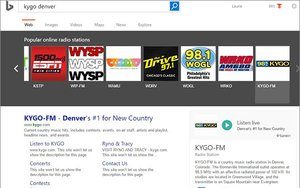— December 18, 2018
As a business owner or marketer, one of the hardest decisions you have to make is whether to raise or lower prices to make sure you are charging the right price for products. If you charge too much for your product or service, there are bound to be serious ramifications; moreover, if you charge too little, you might be out of business sooner than you can imagine. Therefore, the pricing strategy of any business model is key to ensure the profit margin is fair while simultaneously increasing your market share by attracting more potential customers.
The thing is many business owners and marketers struggle with the issue of value-based pricing. Not because they aren’t good marketers, but because they just aren’t experienced in knowing what they ought to charge.

Strategically Pricing Against the Competition
If you can determine the right price to charge for your products, you can increase your revenue, sales and, ultimately, your profit. In this blog post, you will learn a few tips and tricks that will help you better understand how to price your goods through competitive pricing and the right strategy.
Using Comparative Pricing to Gain Advantage
This is one of the oldest techniques used to determine selling price. Marketers will often directly compare their service or products to their competitors’ products and drop the price of their products to get customers to choose their selection instead. Although, this may not be the best approach as it comes at the cost of the business’ credibility.
The problem is comparative pricing is not always as effective as it’s made out to be. Here’s why: if you reduce or increase the price of your products too sharply in consideration of your competition, consumers may become suspicious of your brand; thereby, lowering their consumer purchase intention.
Selling Time Over Money
According to new research, selling the experience rather than possessing the product is vastly more effective. This is not surprising at all, considering most people will keep coming back because they enjoyed the overall experience they had when using the product. Over time, most peoples’ experience with a product leads to more brand positive associated attitudes.
How to Charge More for Your Products
Narrow your target market
It’s a no-brainer: charging more for your products means that not everyone will be able to afford your products. And that’s okay. There’s no harm in alienating a few customers to focus on a specific target market. However, you will need to ensure that you are offering quality products and services. For example, when you go to the mall, you automatically expect higher priced items to be made with better quality materials than lower priced items. You want to ensure that you create a feeling of scarcity. Higher price for higher quality.
Produce a limited quantity
Now that your target audience has reduced, you don’t need to produce as many products as you did before. Just produce enough for your target market.
Limit the buyer’s choices
Giving customers too much to choose from confuses them and induces a phenomenon called decision fatigue. You can prevent this by limiting consumer choice, so they end up only selecting from a manageable product range. In doing so, the number of products you make lessens to fit your target demographic. As long as you are selling everything you are producing, you are successfully doing business.
If you are unsure whether or not your product offering is too small or large, determine whether your products have attraction or substitution effects.
Enhance your packaging
Packaging is an important part of making sales. People are often lured to pay more for products packaged in a sleek way than a product that’s not. It’s not just the product you are selling; you are also selling what it comes in. Packaging is an important part of the equation.
Stand by your products
If you’re selling at a higher price, you’re bound to receive some backlash for it. Of course, not all customers will be pleased with the transition. To convince your target market, you will have to stand by your products and the price you’re charging for them. Offer options like extended warranties, free shipping, and returns. They’ll be more willing to spend money if they feel they are getting more value for the money they are churning out.
Provide social proof
It’s all about the perceived value of what you are selling. Most customers will simply buy a product because their favourite celebrity endorsed a product directly or indirectly. For instance, the burgundy leather tote that Prince Harry’s fiancée Meghan Markle flaunted after the engagement was sold out in just a matter of hours—all because she was spotted with it!
Tips That Will Help You Determine if the Price is Right
Do your research
This may sound counterintuitive, especially if you are trying to stand out, but it’s pretty important to find out what other businesses in your niche are charging for the same products. It’s important to know how you perceive your brand and where it fits in relation to the price of the competition. You can figure this out by creating a scatter chart. First, identify the price of competing brand products. Second, create a chart with two axes: price and product. Third, insert marks for the competitions’ brand products on the chart where their prices correspond. After you know where the competition prices their products, the last step is to insert your brand’s products to a price point where you believe they fit. This will give you a rough idea where to start pricing your products.
Pricing method
If your business offers services, you may need to decide whether you are charging by the hour or using a project-based set fee. If you are charging by the hour and customers are used to a flat rate, you may be perceived to be charging higher. You should incorporate both pricing methods and test for a few months to see which method works best for your customers.
Conclusion
It’s clear that the way you price your products has a large bearing on your revenue. So, while you no doubt want to make your customers happy, you need to focus on making your business a success as well.
Business & Finance Articles on Business 2 Community
(84)
Report Post



